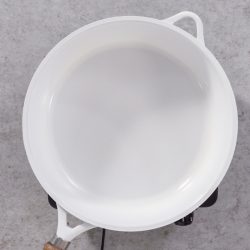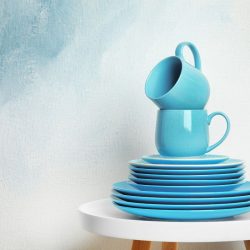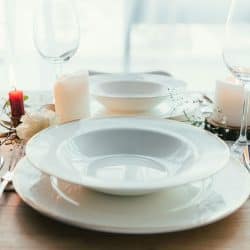Realizing your favorite vintage dishes may not be safe to use anymore can feel like the end of an era. Do you have old Corningware dinnerware and have no idea whether it's toxic? Will older Corningware products test positive for lead, BPA, or cadmium?
We have done extensive research into this question and have the answers below.
If your Corningware dishes are vintage (made before the mid-2000s), they likely are toxic and contain unsafe levels of lead. Almost all Corningware dishes used to feature paint with lead inside of it, thus making vintage dishes dangerous to eat off of.
However, you can still display your vintage Corningware, as long as it doesn't come in contact with the dinnerware you plan to eat from. Lead can make you very sick, so this is not something you want to brush off.
As we begin this post, we will cover all things Corningware dishes and discuss whether vintage products from the brand contain lead, BPA, and even cadmium. It's better to be safe than sorry, especially with the items you cook and eat with, so stick around while we answer all your questions!
![Variety of baking dishes white colored old corningware on a white background, Is Vintage Corningware Toxic? [Detailed Reference Inc. Lead, Bpa, & Cadmium]](https://kitchenseer.com/wp-content/uploads/2022/09/Is-Vintage-Corningware-Toxic-Detailed-Reference-Inc.-Lead-Bpa-Cadmium.png)
Is All Vintage Corningware Toxic?
If your Corningware product is created pre-mid-2000s, it will likely test positive for lead. This is because Corningware, along with most major brands at the time, made its products with lead paint.
So, although your dishes or bakeware may look beautiful, they are toxic. Not only was this manufacturing method harmful to consumers, but it still affects many of us today.
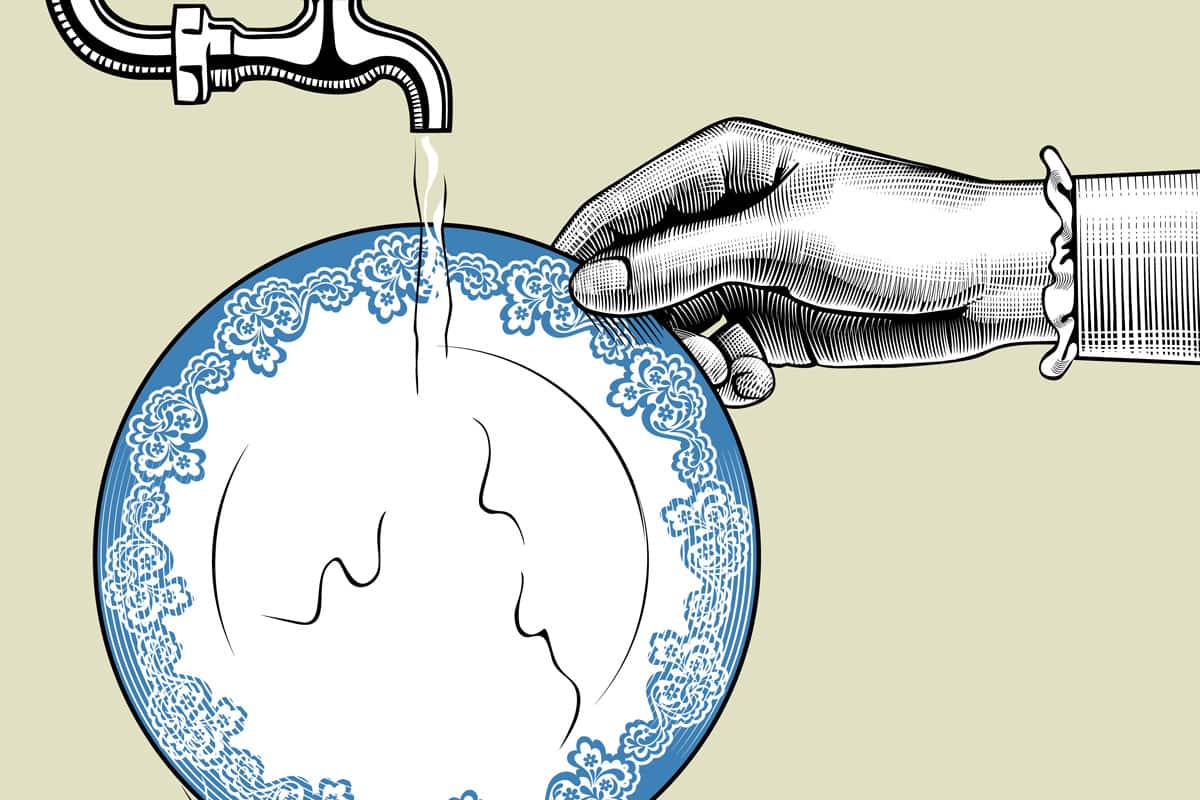
Lead-based products (usually paint) can become incredibly toxic with age and heat, making dinnerware and cookware very hazardous to use for food.
According to Creative Green Living, if you test a pre-mid-2000s Corningware dish, it's possible to see it test positive for lead levels between 15,000 and 100,000 PPM of lead.
PPM means "parts per million" by weight, equivalent to μg/gram. So, if your Corningware is likely to test at 15,000 or even 100,000 PPM, that equates to between 1.5% and 10% lead content.
10,000 PPM equals 1% for reference.
According to scientists, if your blood levels reach more than 0.6 PPM (60 μg/dl), you can be diagnosed with lead toxicosis. So, this can quickly become a severe health risk.
Does Vintage Corningware Contain BPA?
If your vintage Corningware is plastic, it likely contains BPA. Again, this can be murky in terms of when exactly the company stopped using toxic chemicals/products, so we don't recommend using older Corningware.
Generally, if you can't tell if something is safe or not, it's not safe.
Therefore, you might want to store away any old Corningware plastic and ceramic dishes. Bisphenol A (BA) is one of those harmful products that manufacturers used back in the day.
You can usually find BPA in older beverage containers, compact disks, plastic dinnerware, and just about anything made using plastic.
On a brighter note, Corningware now produces BPA-free plastic lids and dinnerware, so we're glad they decided to stop using toxic chemicals during manufacturing.
Does Vintage Corningware Contain Cadmium?
Yes. Like lead and BPA, you can also expect your vintage Corningware to test positive for cadmium.
As mentioned, the brand was not great about using healthy, safe materials for its older products, so you should avoid cooking/eating with them.
According to the Corning brand, they can confirm any dishware before 2005 likely has cadmium. The same goes for lead and BPA, so that's not too long ago.
Typically, as lead and harmful products age, they become more potent. Especially if you cook with toxic dinnerware/cookware, you can create a chemical reaction.
Not only can this harm you but also anyone else who is around.
What Happens If You Consume Lead?
When/if someone comes in close contact with lead (inhaling it or ingesting it), a few major issues can arise. Specifically, lead consumption can cause high blood pressure and brain, kidney, and reproductive health issues in adults.
Therefore, using vintage dishes, even if they look pretty, can cause you to develop long-term health problems. As we said earlier, it only takes 0.6 PPM for you to have lead toxicity, which is not hard to hit with older dishes.
If you suspect your Corningware is toxic and eat from it, we recommend contacting a health professional as soon as possible. Poison control can also walk you through this: the number is (800) 222-1222, and the website link is here.
Common symptoms of lead poisoning may include:
- Headaches
- Stomach pain
- Constipation
- Muscle/joint pain
- Trouble sleeping
- Fatigue
- Irritability
If you or someone you know is experiencing one or more of these after using older dinnerware, we suggest going to urgent care or the hospital for immediate treatment.
Even though you might not feel super bad after coming into contact with lead, it's better to be safe than become extremely ill later.
Can Using Toxic Dishes Kill You?
Although you aren't going to die from coming into brief contact with lead dinnerware, prolonged usage can cause significant health problems. As we covered earlier, lead, BPA, and cadmium are present in vintage Corningware products.
Therefore, using your dishes for eating and cooking is very dangerous. Not only do these toxic ingredients cause instant symptoms, but they can also lead to fatal illness.
Unfortunately, lead is a common issue in various environments and products. Before the early-mid 2000s, brands made products with lead because they weren't aware of its toxicity.
One of the most common sources of lead is paint. This can be painted on a wall or painted on your dinner set. Lead can be hard to distinguish without proper testing, hence why so many people are unaware.
Why Do Companies Use Lead In Their Products?
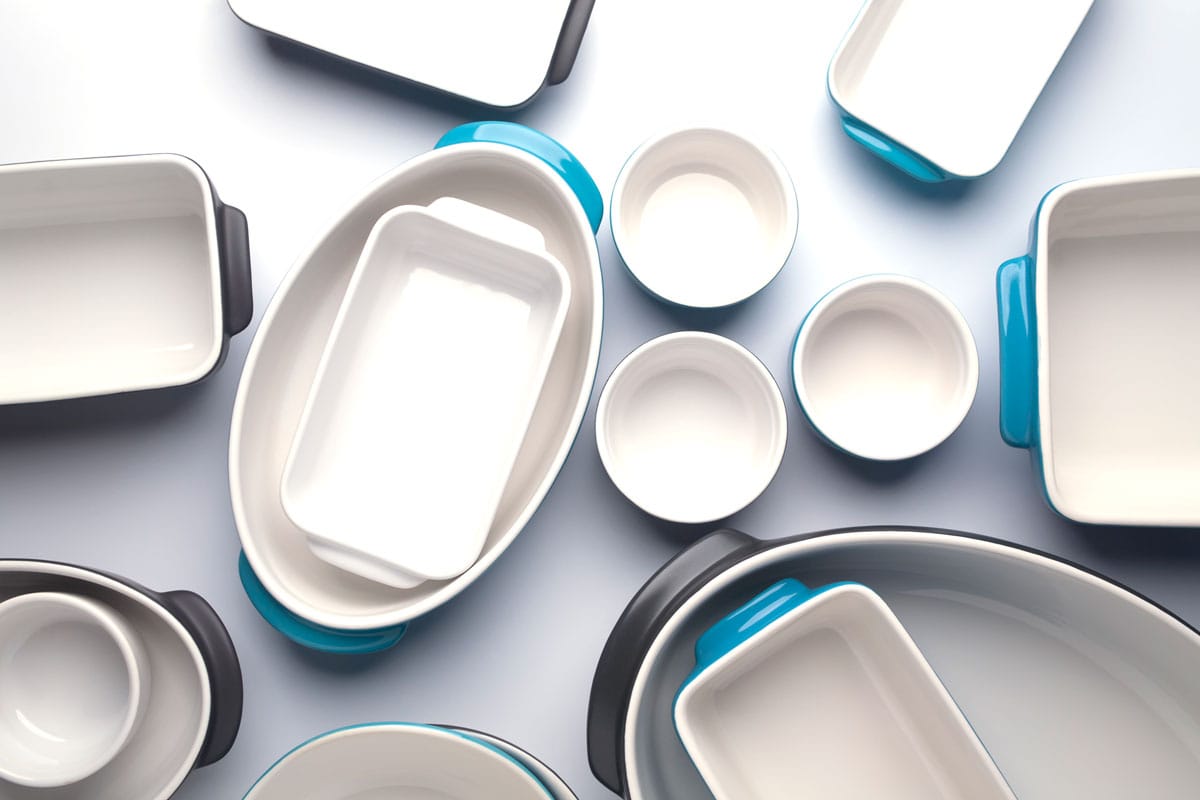
One of the main reasons lead is used in product manufacturing is what it does to plastics. Lead softens plastic materials, making them easier to mold and bounce back to their original shape long-term.
You might also find lead in toys because it stabilizes plastic molecules from reacting to heat. Not only is this dangerous, but it's also extremely unfair to consumers.
Luckily, using lead for consumer products has become taboo, so brands have opted for a greener, cleaner, safer strategy. On the other hand, if a plastic product contains lead, it is likely for toxic lead dust to form.
So, even if you don't actively use plastic products containing lead, they can still emit it. According to the EPA, lead is often found in paint, ceramics, pipes and plumbing materials, solders, gasoline, batteries, ammunition, and cosmetics.
Considering we all use at least one of those items on a daily basis, this can be alarming.
Even with lead being used less frequently in modern times, it still haunts many homes, spaces, and people today.
Does Corningware Still Make Its Products With Lead?
No. Corningware products no longer contain lead, BPA's, or cadmium. As we said, the brand and many others discontinued using toxic chemicals around 2005.
Presently, Corningware advertises toxin-free products, shifting towards a more customer-friendly messaging. Especially with the growing demand for safer manufacturing processes and green materials, Corningware is constantly evolving as a company.
With that said, even though Corningware now does the right thing, it makes us wonder why they didn't always prioritize green and safe products.
Compared to other cookware and dinnerware brands, Corningware isn't the best, but they're also not the worst. The brand falls into a middle ground in terms of safe manufacturing, so do with that what you will.
Regardless, we recommend shopping for safe, eco-friendly, and ALWAYS toxin-free cookware.
Does Corningware Make Good Products?
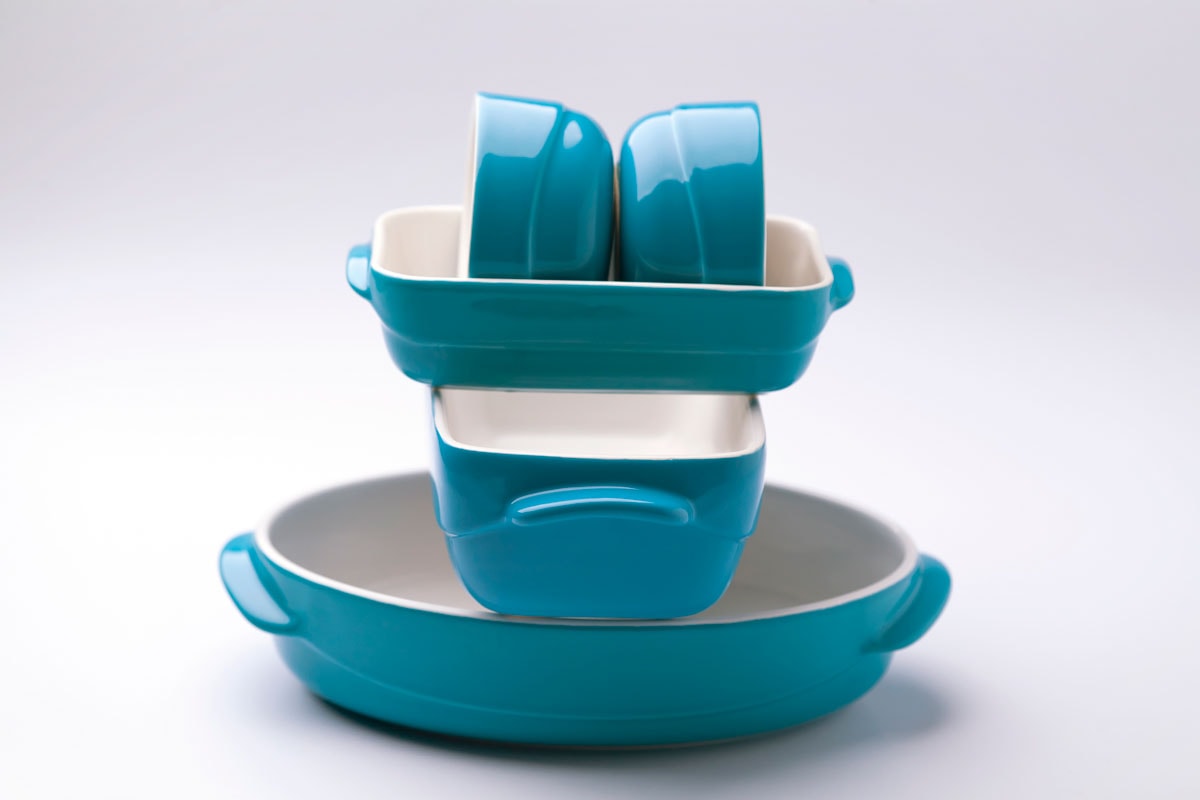
Overall, Corningware products are good but not amazing. When it comes to their quality, many customers see their dinnerware and cookware lasting for years, although that's not always the same experience.
One thing about Corningware is that its products are beautiful. One vintage casserole dish sold for $10,000 on eBay, which makes you wonder if your old dish holds similar value.
Consider Corningware products as collectibles if they're from the early 2000s. Newer Corningware is still very popular, although it doesn't hold much value in collectibility.
There are endless options for cookware available, so Corningware is one of many you can purchase. Luckily, the brand no longer uses toxic chemicals during production, so that's a plus.
CorningWare French White 10 Piece Ceramic Bakeware Set
This bakeware set from Corningware is safe for the microwave, oven, and dishwasher, includes ten pieces, won't absorb smells or stains, resists chipping and cracking, and comes in a few bundle options.
Follow this link to see it on Amazon.
Does Corningware Make Pyrex Products?
Although Corningware is its own brand, the parent company 'Corning Glass Works' does make both Corningware and Pyrex products. However, in 1998, Corning sold its Consumer Products Division to a company now known as World Kitchen.
That company still manufactures Pyrex products, so that's interesting to know. World Kitchen also currently produces Corningware products, one of its most successful brands to date.
To Wrap It All Up
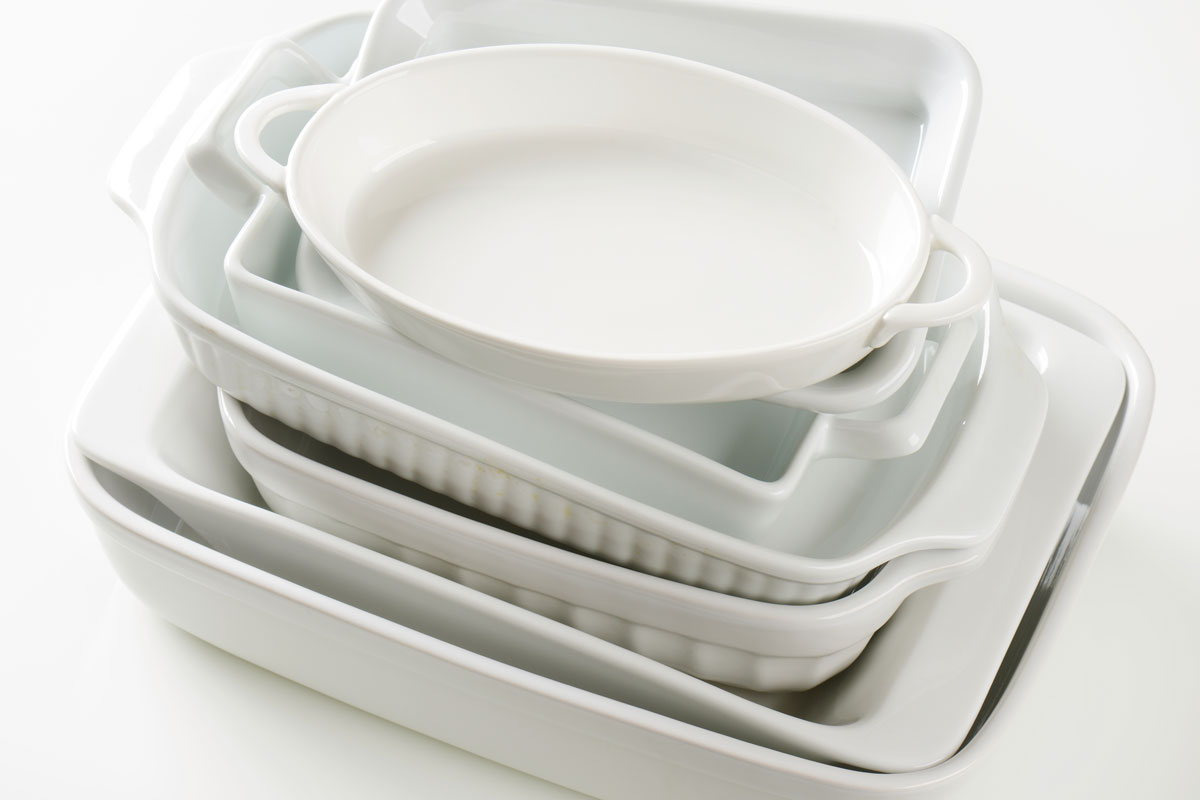
Whether you have vintage Corningware dishes or want to buy them, it's always good to know their safety. From what we found, Corningware products made before 2005 will likely test positive for lead, BPA, and cadmium.
Therefore, we don't recommend cooking or eating from them, as they will make you sick. The Corningware brand, although now safe to eat from, didn't always prioritize consumer safety.
This, unfortunately, was a common theme in many brands and manufacturing processes and certainly makes us stop and think of what we may have been exposed to while cooking our food.
Need even more kitchen help? Check out these related articles below:
Do Corelle Dishes Contain Lead?
Are Pans Oven Safe? [Even With Silicone Handles]
Why Are My Corelle Dishes Chipping? [And What To Do About It]


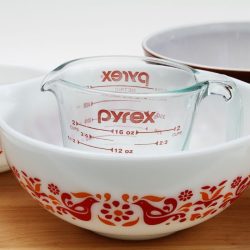
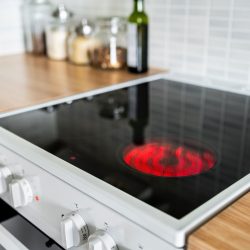
![Scalloped potatoes, potato casserole with the addition of herbs and edible chives flowers in a ceramic baking dish - Does Corningware Contain Lead? [Inc. Blue Cornflower, Spice Of Life, & French White]](https://kitchenseer.com/wp-content/uploads/2022/10/SCALLO1-250x250.jpg)
